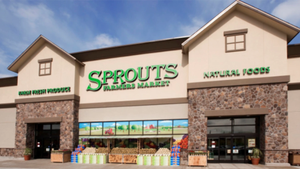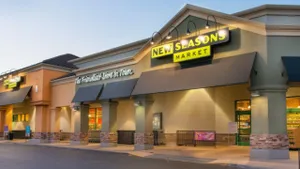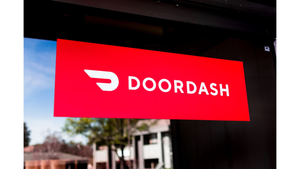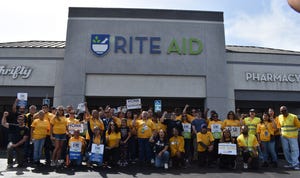REGIONAL DEVELOPER
K-VA-T Food Stores here is moving into its second half-century by putting the final touches on its first 50 years.Having grown largely through acquisitions,
April 4, 2005
Elliot Zwiebach
K-VA-T Food Stores here is moving into its second half-century by putting the final touches on its first 50 years.
Having grown largely through acquisitions, the 90-store chain is concentrating its resources on remodeling, expanding and/or replacing existing stores while beginning to add new stores gradually.
"Taking care of the stores we bought has been the biggest part of our capital spending plan for the last few years," Steve Smith, president and chief executive officer, told SN. "In the past, we've bought a lot of stores from owners who didn't put much investment into them, and we've had to rebuild or remodel a lot of those. But we felt it was a good idea to buy our way into those towns, then to invest the capital to get the stores in the shape we needed them to be."
Nearly all locations compete with Wal-Mart supercenters, Smith said, "but by constantly reinvesting in the stores and keeping them up physically and technologically, we've been able to prosper and remain the No. 1 or No. 2 player in most communities. We've seen Winn-Dixie, Food Lion and Kroger close stores in towns where we're doing well."
Since completing its last two acquisitions -- 11 Piggly Wiggly stores in 1998 and eight Winn-Dixies in 1999 -- K-VA-T has opened approximately 15 additional stores, mostly replacement units that expand existing locations by 10,000 to 12,000 square feet, boosting their size to between 43,000 and 48,000 square feet, "which is the sweet spot for our markets," Smith said.
Most store expansions include adding service meat and seafood counters, pharmacies and sit-down cafes; enlarging bakery-delis and video departments; boosting overall variety and selection; and adding Gas 'n Go fuel centers in parking lots.
A remodeling last November in Elizabethton, Tenn., boosted weekly sales by $100,000, Smith pointed out -- a result that was slightly higher than is typical for most remodelings, he noted.
K-VA-T operates its 90 stores across three states under the Food City banner, with 56 stores in and around Knoxville, Tenn.; 22 along the southwestern edge of Virginia; and 12 in eastern Kentucky, spread across a 200-mile radius in the Appalachian region bordered by the Blue Ridge Mountains on the east and the Smoky Mountains on the west.
Corporate volume hit $1.3 billion last year. Smith said he anticipates sales of approximately $1.4 billion this year, a 7.7% increase.
K-VA-T's goal is to grow sales by 6% to 8% a year, he said, "though it fluctuates depending on real-estate opportunities. But 6% to 8% growth would be a good year."
The chain remains on track to meet that goal going forward, he said, with seven new or replacement stores and six remodelings scheduled for this year, and five to seven new stores and six to eight remodelings set for 2006.
Next Move
Included among the initiatives K-VA-T is undertaking as it prepares to celebrate its 50th anniversary in November are:
- Opening a store later this month in Pikeville, Ky., across from a Wal-Mart supercenter, on the site of a former Winn-Dixie that's been closed for six years.
- Preparing to open an inner-city store next fall in an underdeveloped section of Knoxville with a broadly mixed customer base.
- Contemplating further expansion in the Knoxville area while looking to extend its eastern border toward Roanoke, Va.
- Adding a warehouse addition that will give it sufficient capacity to handle volume increases for years.
- Using its membership in Topco to boost its private-label and pharmacy penetration.
For K-VA-T, being a regional operator is a plus, Smith said, "because we live and work in the same areas where we sell groceries. So we're involved with the people and the activities there. We have a vested interest in the communities where we do business, and we don't have other divisions to carry us. This is our company, right here."
As a regional operator, K-VA-T empowers its store managers and district managers to make decisions on the spot, "and that kind of quick response is one of our assets," Smith said.
"For example, a battalion of soldiers came home recently, while I was out of the country. The district manager thought it was a good opportunity for us to host a celebration at the local armory. So he spent $500 on his own authority to supply the food out of our stores, and we applauded him for doing it because it was the right thing to do."
Food City's commitment is to operate the best stores in town, Smith added.
"It may sound flip to say that, but we really work hard at it. We still hand-cut all beef and pork, our bakery-delis still produce fresh products on-site, and we buy from a lot of local farmers and make a big deal out of it at store level -- something the chains can't or won't do.
"We haven't forgotten about price. Even competing with Wal-Mart at most of our locations, we don't give up on price, though we don't try to start World War III either. But we know that 47% of the folks who shop with us have annual household incomes of $30,000, so we're cognizant of pricing. We remain an everyday low price operator.
"We realize we don't have to beat, or even match, Wal-Mart. We just need to stay within 2% to 3% of them, depending on the category. Though we do go price-for-price with them on some of the top 500 items."
Food City has maintained an EDLP approach for more than 20 years, "though it's more of a hybrid now because we run some hot ads with what we call 'extreme values,' particularly in perishables," Smith noted.
Besides competitive prices, Food City's biggest edge against Wal-Mart is convenience, Smith pointed out.
"To shop at a supercenter that's 200,000 square feet can be an inconvenient ordeal," he said. "Most people shop Wal-Mart because of price, but we feel if we can neutralize them by staying close on price while offering more convenience, then the attractiveness of Wal-Mart diminishes and we can hold onto our market share."
K-VA-T operates its stores in two divisions: the Knoxville division, which includes 44 stores (40 in Tennessee, four in Kentucky); and the Tri-Cities division -- encompassing Kingsport and Johnson City, Tenn., and Bristol, which overlaps both Tennessee and Virginia -- with 46 stores (16 in Tennessee, eight in Kentucky, and 22 in Virginia).
While K-VA-T sees ample opportunities to expand within its current operating area, Smith said it is also looking eastward, toward Roanoke, Va., in the center of the state, for growth opportunities. "We've opened a couple of stores in that direction, and it's a natural growth area for us," he said. Yet most short-term growth is likely to be in the Knoxville marketing area, he added.
Market Leader
Smith said Food City is the market-share leader in Knoxville, with 25.4%, followed by Wal-Mart with 23%, and Kroger with 21.5%. "Knoxville is a market where Kroger had been the market-share leader for years, but we've grown slowly while Wal-Mart has grown rapidly. Kroger has slipped back to third," Smith said.
K-VA-T plans to open four stores in the division this year, including a new store and a replacement unit in metropolitan Knoxville; a new store in West Knoxville; and a new store in an inner-city area that's part of a revitalization project near the University of Tennessee, Smith said.
"That store will be in an underserved part of the city, where people have had to travel a long way to shop at a good supermarket," Smith said. "We're partnering with the city there to redevelop an old, rundown piece of real estate."
The store, scheduled to open in October or November, will be 43,000 square feet. "We hope to do $300,000 a week and grow from there," Smith said.
The store will serve a diverse clientele, including a large group of mostly low-income, African American customers; middle-income residents living in redeveloped lofts and condominiums; and students from the university. "It will really challenge our merchant mentality to do a good job there," Smith said.
The company anticipates three remodelings in the Knoxville division as well.
In its Tri-Cities division, Food City is the market leader with a share of 29.8%; with Wal-Mart a close second, followed by Kroger, Food Lion and various independents, Smith said.
The chain is doing a lot of back-filling in the division, Smith said. "We're going back into cities where we already have stores and evaluating where we don't have enough of a presence," he explained.
K-VA-T plans two new stores -- in Pikeville and Prestonsburg, Ky. -- and a replacement store in Pikeville, plus three remodelings.
The replacement store is scheduled to open later this month on the site of a Winn-Dixie that's been closed for more than six years. K-VA-T acquired the property several months ago. Despite the presence of a Wal-Mart supercenter practically across the street, Smith said he has high expectations for the store. "We think we can differentiate ourselves enough from the Wal-Mart to do sufficient business there," he said.
K-VA-T has been self-distributing since the mid-1980s, and operates a distribution center of just under 1 million square feet in Abingdon from which it supplies 90% to 95% of its own needs. It uses third parties for some specialty foods and general merchandise, but only when they are willing to cross dock, Smith said.
The company plans to add 150,000 square feet of freezer space to the warehouse, with construction set to start in the spring, Smith said.
Once the freezer is completed, the company will convert the existing freezer space to medium-temperature meat and dairy storage, he noted. "With the capacity we'll add, we believe we will be able to increase our store volume by 50% without ever breathing hard," Smith said.
He said he's particularly enthused about K-VA-T's membership in Topco. "Joining Topco was probably the single best thing we've done from a merchandising standpoint because it's enabled us to boost corporate brand penetration from 4% in 1995 to over 20% last year," Smith explained.
About the Author
You May Also Like






